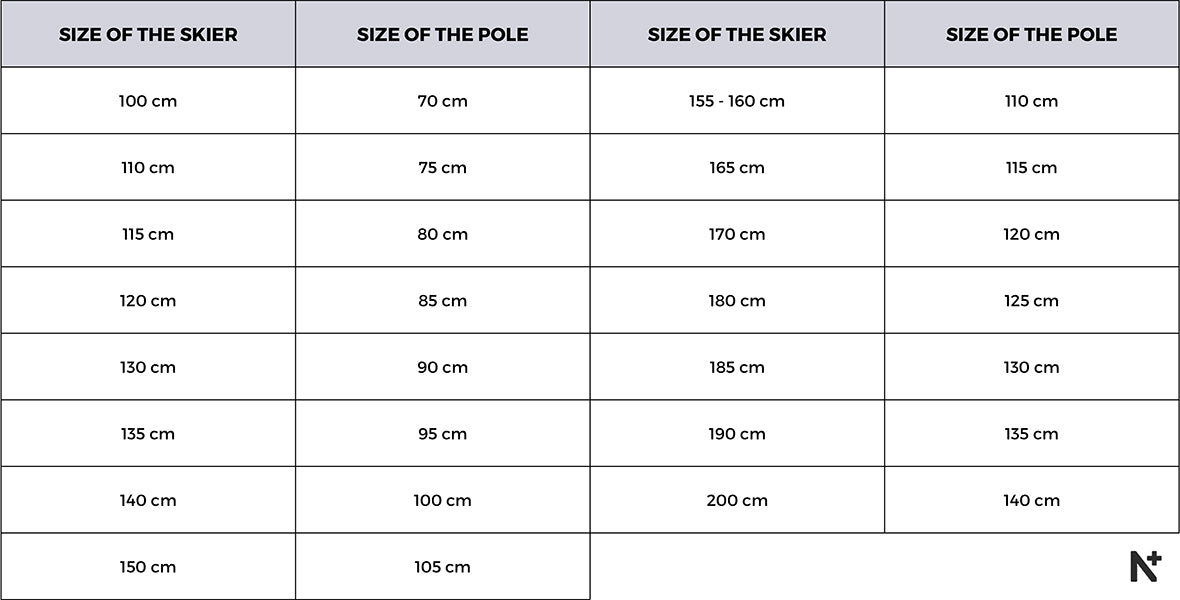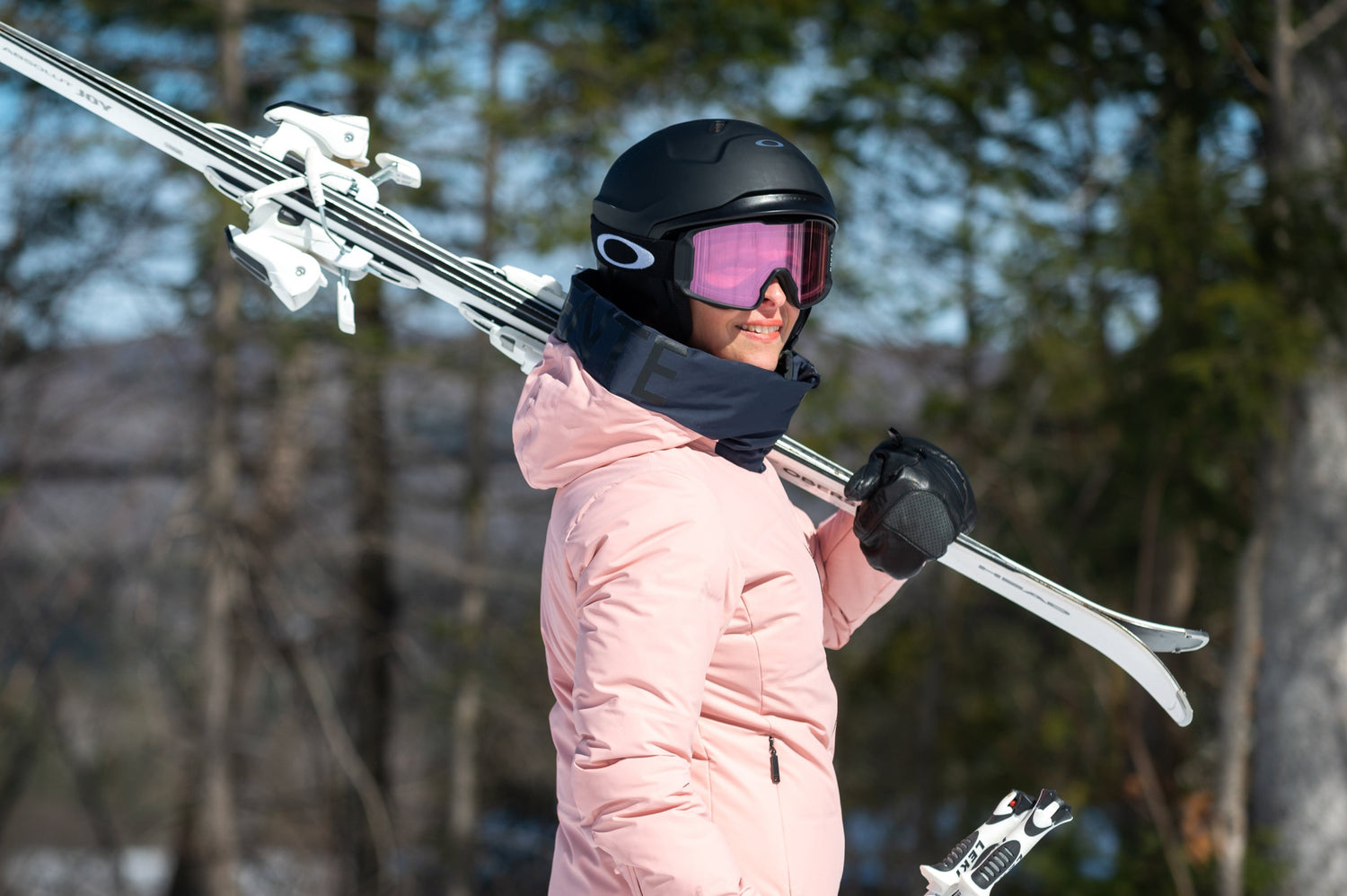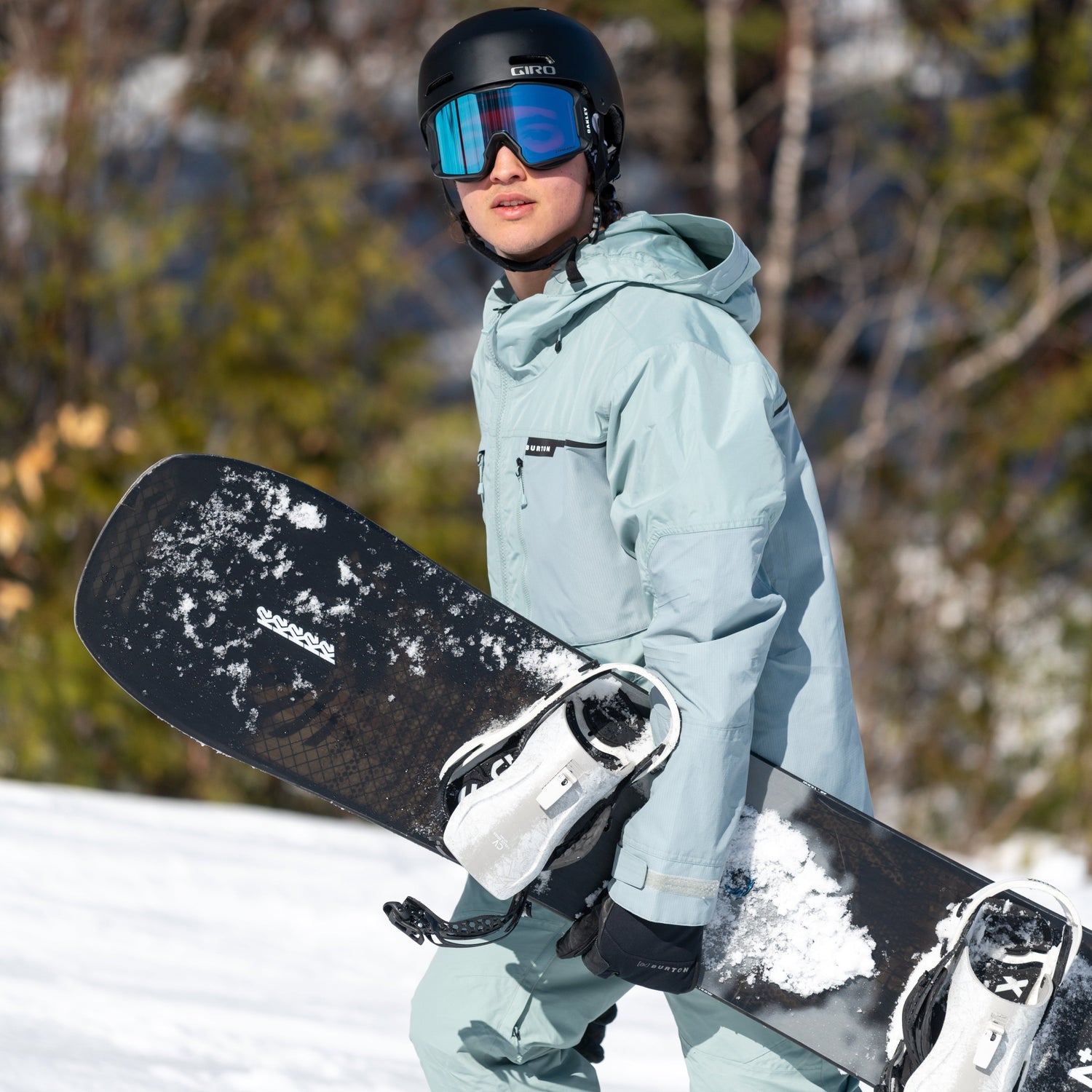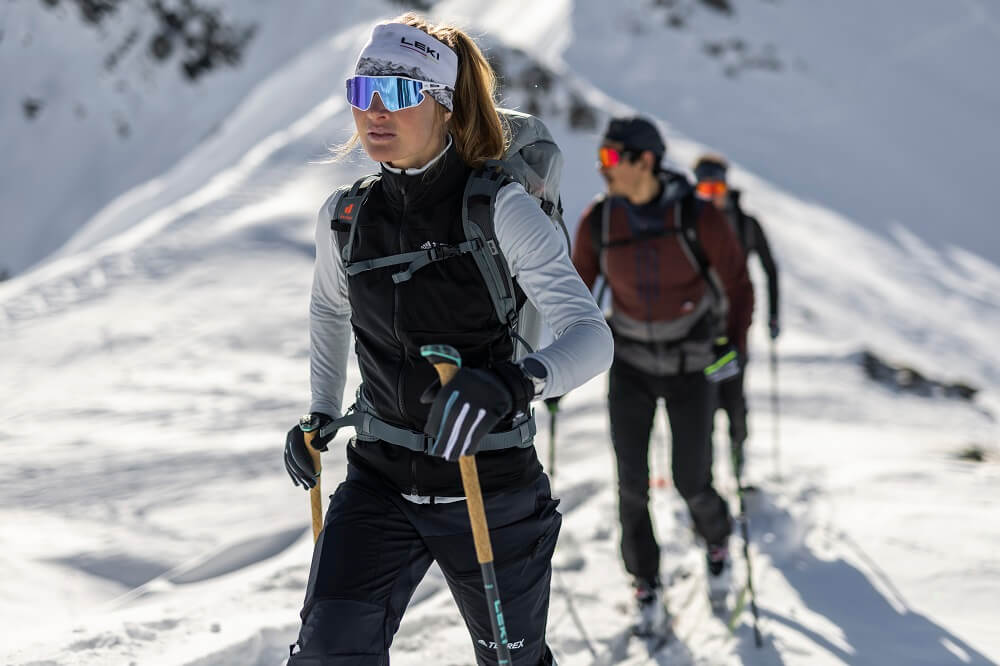Oberson x Leki
_____________________________
What are ski poles used for?
Although some people prefer to ski hands-free, ski poles do have a use. First, they allow you to push yourself along on flat terrain or to the chairlift. When you ski down the mountain, they give you more stability to better turn with certain techniques. They also help you regain your balance or get up after you’ve fallen.
In addition, for ski touring enthusiasts, poles give you stability when traversing steep terrain.

Types of Ski Poles
There are various types of ski poles depending on your discipline. Poles should be adapted to your type of skiing so you’re comfortable descending.
All-mountain and piste skis
To be comfortable and perform well on ski resorts’ runs and glades, you need poles perfectly adapted to your height. You should also have medium baskets suitable for groomed slopes and light snow accumulations.
Freeride and powder skiing
Freeriding usually means powder! For deeper snow, shorter ski poles will be more comfortable. Why? Because poles that are too long are cumbersome when the snow is deep. Your arms will be tired from having to hold them higher.

Ski touring
Given the varied terrain and conditions encountered on ski touring adventures, adjustable poles are what you need. You won’t have fun using on-piste ski poles. Plus, you’ll sometimes need each pole to be a different length during steep traverses.
Freestyle skiing
For the snow park, some people prefer not using poles while others do. To be comfortable on jumps, ramps and other features, go with shorter ski poles.
Racing
Racing poles have an aerodynamic curved profile. Their baskets are smaller. Racing poles are equipped with pole guards on the grips to protect from impacts with gates.

Ski Pole Features
Grips
Grips are often made of rubber, harder materials and foam. Their ergonomic design allows for a comfortable grip. Some poles, especially those designed for ski touring, have an extended grip so you have a larger area to hold when traversing.
Plus, some grips feature a hook that allows you to adjust the risers on touring bindings. These features are just as advantageous for splitboarders.
Straps
Straps are worn on your wrists, which gives you a better hold on the grips. Some ski poles have an automatic release system for falls.
Why not wear wrist straps when skiing in glades and avalanche terrain? The reason is simple: you don’t want to be attached to your poles in the event of a fall, avalanche or crash. In addition, hitting a tree with your pole can wreck your shoulder.
At Leki, Trigger 3D technology offers a three-dimensional trigger system that ensures the wrist strap will detach during a fall. This technology offers a wide release radius combined with an ergonomic, comfortable, safe grip.

Shafts
Pole shafts can be made of aluminum or carbon fibre. There are differing qualities of aluminum that will be either lighter or heavier and more or less durable. A high-quality aluminum shaft is less likely to bend if the poles flex too much. Carbon fibre is very light and durable.
Baskets
Basket size varies depending on ski pole type. Smaller baskets are suitable for on-piste skiing and racing. For powder skiing and ski touring, larger baskets prevent your poles from sinking into the snow.
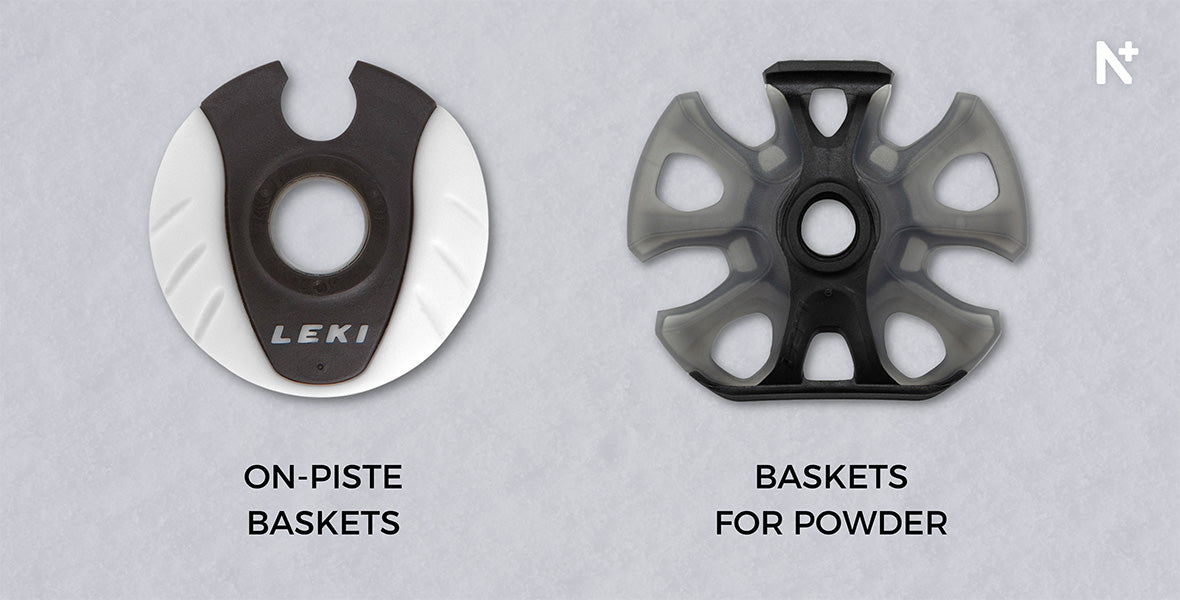
Guards
Racing poles feature guards that cover the grips. These plastic shells protect athletes from impacts with gates.

How to Choose a Ski Pole Length
For all-mountain and piste skis:
Step 1: Put on your downhill ski boots.
Step 2: Turn the ski pole upside down.
Step 3: Make sure the handle is firmly on the ground.
Step 4: Grab the shaft under the basket.
Step 5: If your arm forms a 90-degree angle, the ski pole size is perfect for your height.
